#katherine victor
Photo
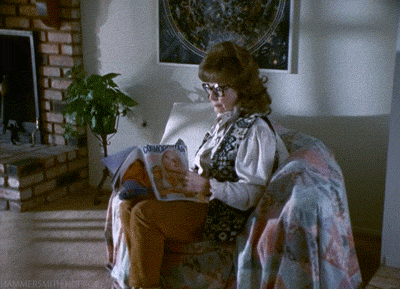
#Katherine Victor#Fred Olen Ray#Fugitive Rage#home for the holidays#honey i'm home#mom's house#grandma's house#don't sneak up on me#glasses#Kathrin Victor#Hammersmith Horror
144 notes
·
View notes
Text

"Look, what kind of a creep joint is this?!"
25 notes
·
View notes
Text
CREATURE OF THE WALKING DEAD (1965) Reviews and overview
CREATURE OF THE WALKING DEAD (1965) Reviews and overview
‘An experiment of terror! A result of horror!’
Creature of the Walking Dead is a 1965 American horror film adapted by Jerry Warren (Face of the Screaming Werewolf; Curse of the Stone Hand; Teenage Zombies) from a 1961 Mexican horror film La Marca del Muerto (“The Mark of Death”) directed by Fernando Cortés.
The screenplay for the 1961 Mexican original was by José María Fernández Unsáin (Madness…

View On WordPress
#1961#1965#Bruno VeSota#Fernando Cortés#film#horror#Jerry Warren#José María Fernández Unsáin#Katherine Victor#La Marca del Muerto#Mexican#movie#review#reviews
0 notes
Text
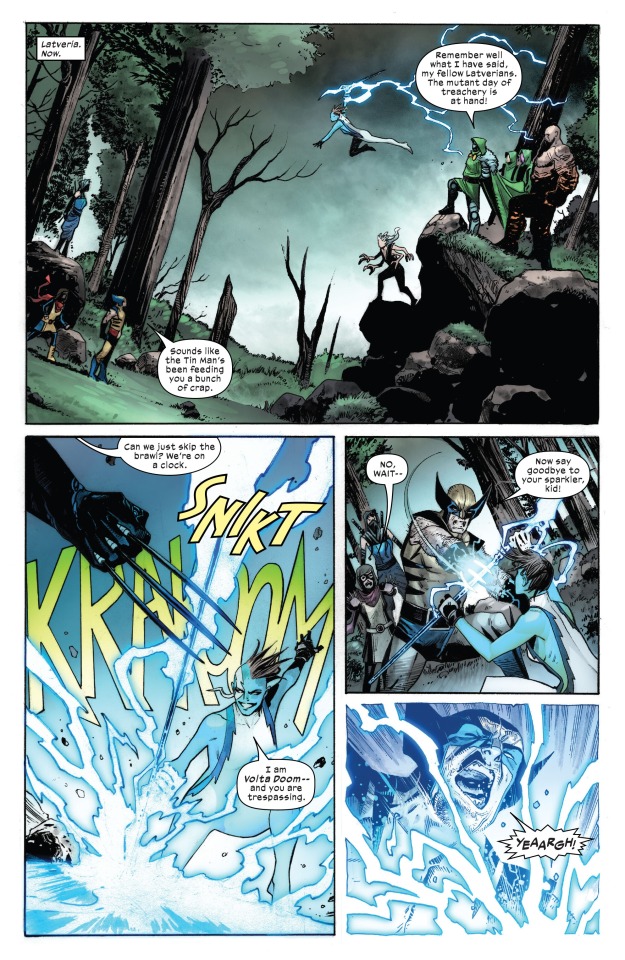
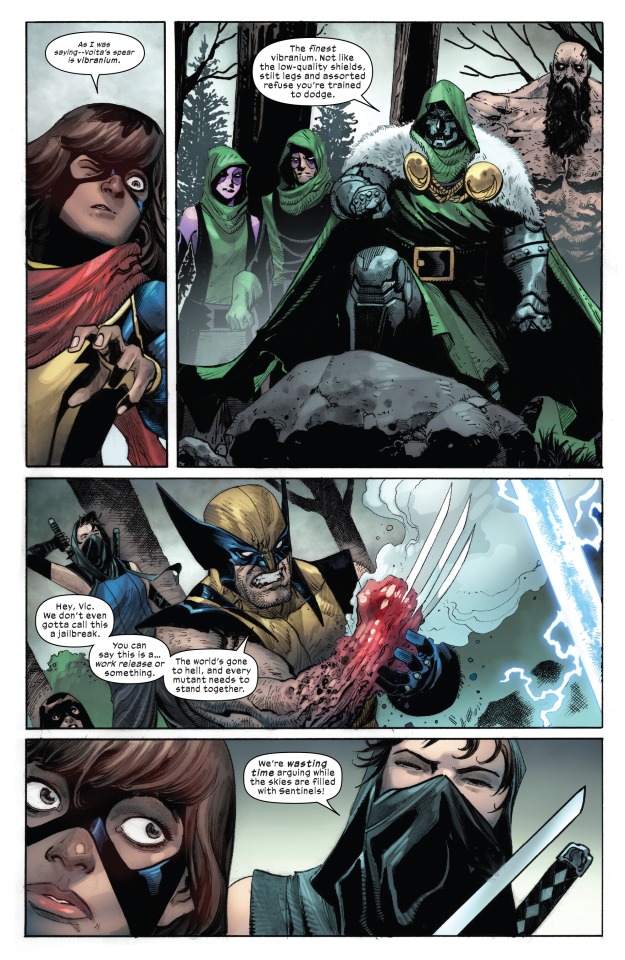




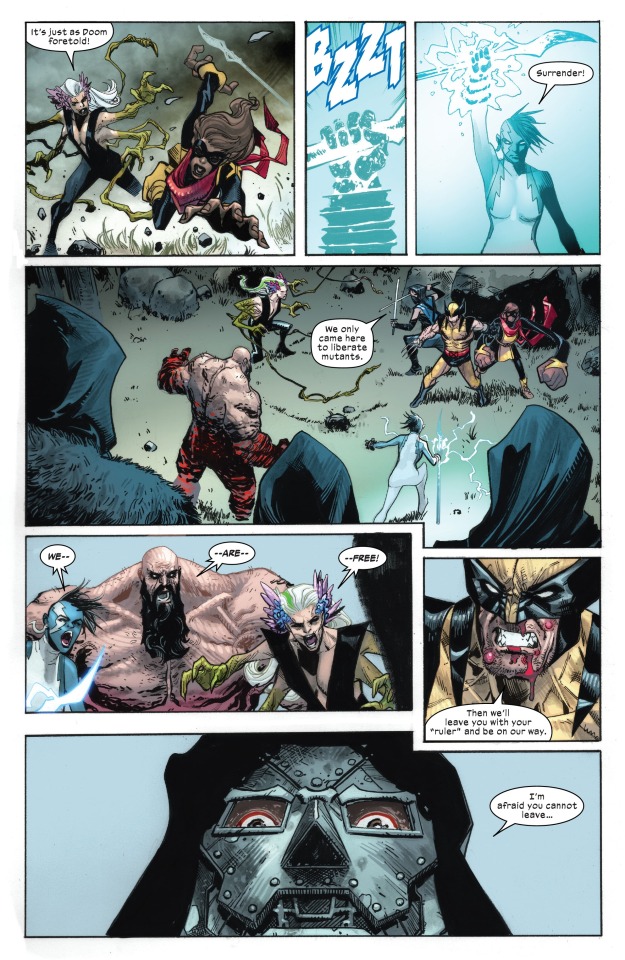



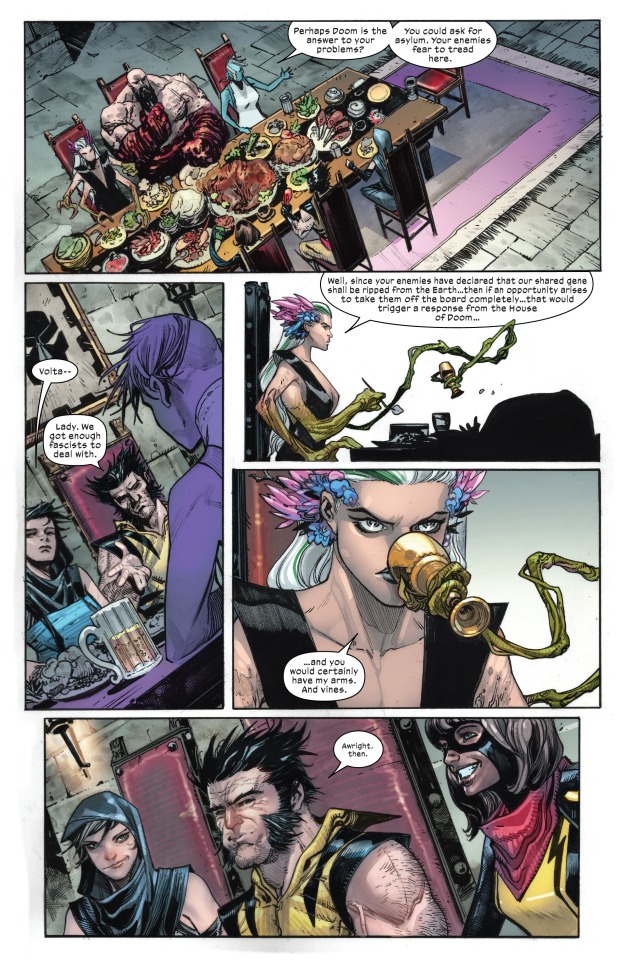
The meeting between the remaining X-Men and Doctor Doom's Latverian Mutant Squad involves in a misunderstanding fight and then, having a feast in Doom's Castle. Doctor Doom knows about Kamala's dietary requirement in serving halal food. Doom also knows that Xavier is weak in leadership on Krakoa's mutants.
X-Men v6 #29, 2023
#wednesday spoilers#Wolverine#Logan#James Howlett#Ms Marvel#Kamala Khan#Shadowcat#shadowkat#Kitty Pryde#katherine pryde#X Men#XMen#Doctor Doom#Dr Doom#Victor Von Doom#Nerium#Volta#Slag#Ironcloak#Dreamer#Latverians#Fall of X#marvel
38 notes
·
View notes
Text
To anyone asking where my gender chaos comes from: I was socialized as female, but these were my role models/fave movies growing up:
Dame Julie Andrews in Victor Victoria - 1982


Katherine Hepburn in Sylvia Scarlett - 1935
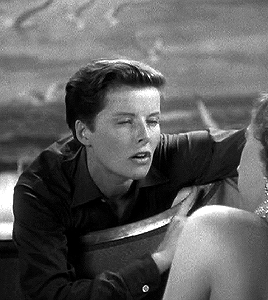
Also, I am queer AF
#dianneking#dianneking rambles#Gender chaos#queerness#I might have been a weird kid#But then I became a weird adult so all is well#victor victoria#Victor Victoria 1982#sylvia scarlett#Katherine Hepburn#dame julie andrews#Gender envy#gender? i hardly know her
90 notes
·
View notes
Text

WIP BIG BANG SIGN-UPS ARE LIVE!
The 2024 round of WIP Big Bang is now open for sign-ups! Any fandom is welcome, as long as the fic is 500 completed so far and will be at least 7,500 words upon its finishing. Signing up is easy: just fill out the form linked below after you read the FAQ and take a look at the schedule.
#wip big bang#signal boost#writing event#art event#multifandom event#uncharted#uncharted 2#uncharted 3#uncharted 4#uncharted 2022#nathan drake#elena fisher#victor sullivan#chloe frazer#samuel drake#nadine ross#atoq navarro#gabriel roman#eddy raja#zoran lazarević#harry flynn#daniel pinkerton#katherine marlowe#roberto guerrero
3 notes
·
View notes
Text
CONTAINS SPOILERS FOR BOOK 2!
And then we’ve got several characters who are associated with one or both of the orders in some way, and/or play an important role in TCFOCH:
Katherine “Kitty” Baker

Mina Harker

Sterling Abbott

Victor Alden

Thomas Hendriks

#the case files of clara holmes#gothic literature#classic literature#gothic lit#classic lit#dracula#dracula by bram stoker#dracula book#mina harker#katherine baker#kitty baker#victor alden#sterling abbott#thomas hendriks
6 notes
·
View notes
Text
Have my superpower au

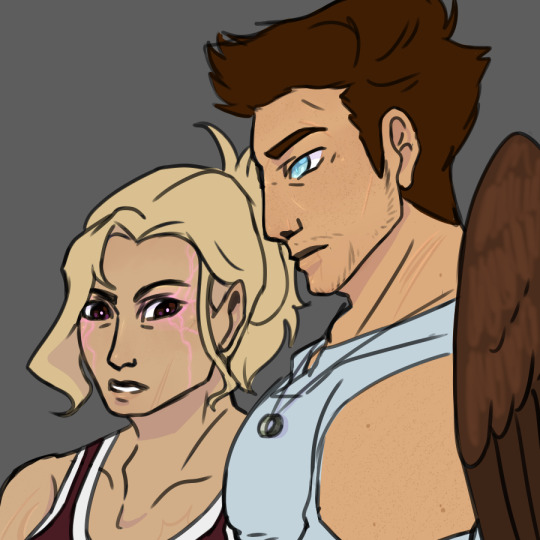


Marlowe's just a bitch
Sully doesn't have powers
Rafe's a bloodsucking bastard
Talbot can do some like mind control
Nate has wings and enhanced speed
Elena has telekinesis
Chloe has either umbrakinesis or construct creation
Flynn has invisibility and somehow survives uc2 (I have an agenda that is 14 years too late)
Sam has pyrokinesis
Nadine has no powers (so far who knows)
#uncharted#uncharted superpower au#nathan drake#elena fisher#chloe frazer#rafe adler#sam drake#katherine marlowe#kate marlowe#talbot#victor sullivan#sully#harry flynn#nadine ross
18 notes
·
View notes
Text
So Sully is Nate’s mentor, best friend, and father all in one. We saw him basically adopt a 15 year old Nate with very real concern for the kid driving him to take the kid under his wing. He does this after betraying a client who is paying him very well and risking being shot by her men in order to protect this kid he doesn’t know. We saw this in the same game where our villain Marlowe (that same ex-client) tried to plant the idea in Nate’s head that Sully only took him under his wing so he could use Nate in money making schemes and treasure hunts. Nate’s just coming out of being drugged when she tries this and he still immediately calls bullshit because it 100% is bullshit.
So when they made the movie they apparently thought it would be a great idea to change things up by having Marlowe be absolutely right about Sully being a scumbag who starts things off by immediately trying to use Nate to get rich.
#uncharted#uc3#victor sullivan#nathan drake#Katherine Marlowe#and just for giggles let’s have Sam live Nate’s life#and replace all of Nate’s experiences with being a bartender
54 notes
·
View notes
Text
This year Eugene Victor Tooms would have striked again.
Just something to think about.
#x files#the x files#akte x#dana scully#fox mulder#dana katherine scully#tooms#eugene victor tooms#i want to believe#the truth is out there
3 notes
·
View notes
Text
Sometimes I randomly remember stuff and think ““Wow that’s funny” then immediately forget about it
#like for some reason at school yesterday I randomly remembered Anne Boleyn and Katherine Howard we’re cousins#Victors Speaks
2 notes
·
View notes
Text
“LITTLE WOMEN” (1933) Review
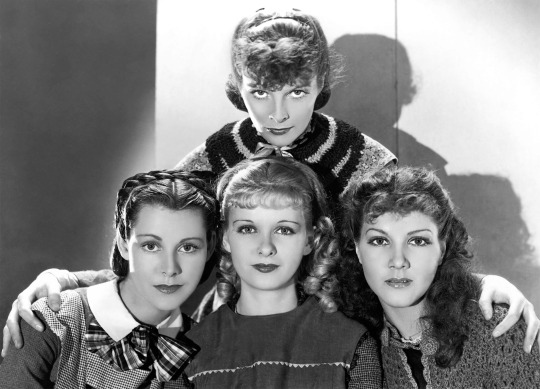
"LITTLE WOMEN" (1933) Review
There have been many adaptations of Louisa May Alcott's 1868-69 best-selling two-volume novel, "Little Women". And I mean many adaptations - on stage and in movies and television. I have personally seen three television adaptations and four movie adaptations. One of the most famous versions of Alcott's novel is the 1933 movie adaptation, produced by Merian C. Cooper and directed by George Cukor.
Although I have seen at four adaptations more than once, I had just watched this version for the very first time. Judging from the reviews and articles I have read, Cukor's "LITTLE WOMEN" seemed to be the benchmark that all other versions are based upon. So, you could imagine my anticipation about this film before watching it. How did I feel about "LITTLE WOMEN"? That would require a complicated answer.
"LITTLE WOMEN" told the story of the four March sisters of Concord, Massachusetts - Margaret (Meg), Josephine (Jo), Elizabeth (Beth) and Amy - during and after the U.S. Civil War. Since second daughter Jo is the main character, the story focuses on her relationships with her three other sisters, her parents (especially her mother "Marmee"), the sisters' Aunt March, and the family's next-door neighbors, Mr. James Laurence and his grandson Theodore ("Laurie"). Although each sister experiences some kind of coming-of-age throughout the story, the movie focuses on Jo's development through her relationship with Laurie and a German immigrant she meets in New York City after the war, the charming and older Professor Friedrich Bhaer. Jo and her sisters deal with the anxiety of their father's involvement in the Civil War, genteel poverty, scarlet fever, wanted and unwanted romance, and Jo's fear of dealing the family breaking apart as she and her sisters grow older.
I must saw that the production values for "LITTLE WOMEN" were certainly top-notch. One has to credit producer Merian C. Cooper in gathering a team of excellent artists to re-create 1860s Massachusetts and New York for the movie. I was especially impressed by Van Nest Polglase's art direction, Sydney Moore and Ray Moyer's set decorations and art direction team of Hobe Erwin, George Peckham, and Charles Sayers. However, I simply have to single out Walter Plunkett's excellent costume designs for the film. I doubt very much that Plunkett's costumes were an accurate depiction of 1860s fashion, I believe he came close enough. Plunkett's career also included work for 1939's "GONE WITH THE WIND", "RAINTREE COUNTY", from 1957 and the 1949 version of "Little Women". I suspect that this film marked his debut for designing costumes for the mid-19th century. I did have a problem with the hairstyles worn by three of the four leads. A good deal of early 1930s hairstyles seemed to have been used - with the exception of the short bob. At least three of the actresses wore bangs . . . a lot. Bangs were not popular with 19th century women until the late 1870s and the 1880s.
Until the release of the 2019 film, George Cukor's adaptation of Alcott's novel has been considered the best by many film critics. Do I agree with this assessment? Well, I cannot deny that I had enjoyed watching "LITTLE WOMEN". One, producer David Selznick and director George Cukor did an excellent job in their selection of the cast - especially the four actresses who portrayed the March sisters. All four had excellent chemistry. The movie's portrayal of the U.S. Civil War and the years that followed it immediately struck me as pretty solid. And although there were moments when the film threatened to border on saccharine, I must admit that Cukor and the screenplay written by Victor Heerman and Sarah Y. Mason kept both the narrative and the film's pacing very lively. And finally, I enjoyed how the movie depicted Jo's friendship and romance with Professor Friedrich Bhaer. I found it warm, charming, romantic and more importantly . . . not rushed.
However, I do have a few issues with "LITTLE WOMEN". There were times when the movie, especially during its first half hour, seemed in danger of wallowing in saccharine. I get it. Alcott had portrayed the Marches as a warm and close-knit family. But Alcott had included minor conflicts and personality flaws in the family's portrait as well. It seemed as if director George Cukor, along with screenwriters Sarah Y. Mason and Victor Heerman were determined to whitewash this aspect of Alcott's novel as much as possible. This whitewashing led to the erasure of one novel's best sequences - namely Amy March's burning of Jo's manuscript in retaliation for an imagined slight, Amy's conflict with her schoolteacher, the development of Amy and Laurie's relationship in Europe, and Meg's conflict Aunt March over her relationship with tutor John Brooke. These deletions took a lot out of Alcott's story. It amazes me to this day that so many film critics have willingly overlooked this. Do not get me wrong. "LITTLE WOMEN" remained an entertaining film. But in erasing these aspects of Alcott's story, Cukor and the two screenwriters came dangerously close to sucking some of the life out of this film. Ironically, Mason and Heerman repeated their mistake in MGM's 1949 adaption with the same results.
Most critics and movie fans tend to praise Katherine Hepburn's portrayal of Jo March to the sky. In fact, many critics and film historians to this day have claimed Hepburn proved to be the best Jo out of all the actresses who have portrayed the character. Do I agree? No. Although I admired Hepburn's performance in the movie's second half, I found her portrayal of the adolescent Jo in the first half to be a mixed bag. There were times when I admired her spirited performance. There were other times when said performance came off as a bit too strident for my tastes. I honestly do not know what to say about Frances Dee's performance as Meg March. My problem is that I did not find her portrayal that memorable. I barely remember Dee's performance, if I must be honest. I cannot say the same about Joan Benett's portrayal of the youngest March sibling, Amy. Mind you, Bennett never received the chance to touch upon Amy's less pleasant side of her nature. And it is a pity that the screenplay failed to give Bennett the opportunity to portray Amy's growing maturity in the film's second half. But I have to admit that as a woman who was roughly three years younger than Hepburn, she gave a more subtle performance as a pre-teen and adolescent Amy, than Hepburn did as the teenaged Jo. The one performance that really impressed me came from Jean Parker's portrayal of Beth March, the family's shyest member. I thought Parker did an excellent job of conveying Beth's warmth, fear of being in public and the long, slow death the character had suffered following a deadly bout of scarlet fever.
I can honestly say that Mrs. "Marmee" March would never be considered as one of my favorite Spring Byington roles. Mind you, the actress gave a competent performance as the March family's matriarch. However, there were times when she seemed too noble, good or too ideal for me to regard her as a human being. As is the case in most, if not all versions of "LITTLE WOMEN", the Mr. March character barely seemed alive . . . especially after he returned home from the war. I cannot blame actor Samuel S. Hinds, who portrayed. I blame the screenwriters for their failure to do the character any justice. On the other hand, I did enjoy Henry Stephenson's portrayal of the complicated, yet likeable Mr. Laurence. I enjoyed how Stephenson managed to slowly, but surely reveal the warm human being behind the aloof facade. Edna May Oliver gave a very lively performance as the irascible, yet wealthy Aunt March. In fact, I would go as far to say that her performance had breathed a great deal of fresh air into the production. Not many critics were impressed by Douglass Montgomery's portrayal of the March sisters' closes friend, Theodore "Laurie" Laurence. I can honestly say that I do not share their opinion. Frankly, I felt more than impressed by his portrayal of the cheeky, yet emotional Laurie. I thought he gave one of the film's better performances - especially in one scene Laurie reacted to Jo's rejection of his marriage proposal. I thought Montgomery did an excellent job of reacting emotionally to Jo's rejection, without going over the top. I also enjoyed Paul Lukas' interpretation of Professor Bhaer. There were moments when his performance threatened to get a little hammy. But the actor managed to reign in his excesses - probably more so than Hepburn. And he gave a warm and charming performance as the romantic Professor Bhaer.
Yes, I have some issues with this adaptation of "LITTLE WOMEN". If I must be honest, most of my issues are similar to my issues with the 1949 adaptation. This should not be surprising, since both movies were written by the same screenwriters - Sarah Y. Mason and Victor Heerman. However . . . like the 1949 movie, this "LITTLE WOMEN" adaptation proved to be a solid and entertaining adaptation of Louisa May Alcott's novel. One can thank Mason and Heerman, director George Cukor and the fine cast led by the talented Katherine Hepburn.

l
#little women#little women 1933#louisa may alcott#George Cukor#merian c. cooper#jo march#meg march#amy march#beth march#katherine hepburn#frances dee#joan bennett#jean parker#spring byington#douglass montgomery#paul lukas#henry stephenson#edna may oliver#walter plunkett#victor heerman#sarah y. mason#john davis lodge#samuel s. hinds#u.s. civil war#gilded age#old hollywood#period drama#period dramas#costume drama
5 notes
·
View notes
Text
0 notes
Text
Onto the longfics.
My first unofficially finished (will explain more below) longfic is an Uncharted 3 AU/Fix It with crossover elements featuring Elena kidnapped by Katherine Marlowe and her Hermetic Order in Yemen instead of Sully. We basically “fix” the second half in combo with kidnapping Elena, retconning Rameses and his pirate arc, and giving Marlowe/Talbot more proper boss battles at the end of 3 in Ubar.
Note: unfortunately due to me not knowing much about let alone embracing the traditional chapter structure of AO3 until late 2021, this fic is in a “series” format as is Uncharted: Samuel’s Fortune, Uncharted: Drake’s Damsels, Uncharted: Flaming Abyss, and Grand Theft Auto: The Ballad of Marina Sanchez. And outside of the first chapter, it’s unofficially finished (lots of edits still to be done at some point chapter 1 onwards if I ever get time)
Warnings for Uncharted Finding Ubar: contains kidnapping, non consensual bondage (including mummification), groping, spanking and implied rape in addition to Uncharted 3’s strong language, violent action, featuring of creepy crawlies, drugging featuring hallucinations, temporary major character deaths, and major villain deaths
#uncharted#uncharted 3#fix it fanfiction#dark fic#kidnap whump#bound and gagged damsel#damsel in distress#nathan drake#victor sullivan#elena fisher#Katherine Marlowe#Talbot uncharted#Rameses uncharted#crossover#whump fic
0 notes
Text
Those critics who read Frankenstein as an incest tale see the monster as a psychoanalytic symbol, as a living psychic projection whose importance lies in what he means to Frankenstein rather than in what the monster himself feels and suffers. Those critics who read the monster as a daughter focus on the monster's anger and pain, but tend to skirt the importance of the incest theme to the monster's anguish. When Frankenstein is read through the lens of Mathilda, the tale of father-daughter incest that Shelley wrote immediately after Frankenstein, one can propose a fuller interpretation: Frankenstein tells the story of a father and daughter locked in bitter conflict; more specifically, Mary Shelley portrays Victor Frankenstein as a paternal figure who projects his own incestuous guilt upon his creature and, having made it monstrous, rejects it.
‘My Hideous Progeny': Mary Shelley, William Godwin, and the Father-Daughter Relationship by Katherine C. Hill-Miller
#source is linked#i recommend reading the chapter in full to anyone who’s interested#frankenstein#katherine c. hill-miller
563 notes
·
View notes
